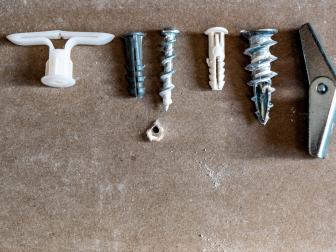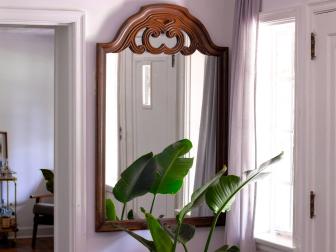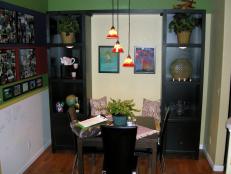How to Use Drywall Anchors
Find out how to hang heavy items on your walls and what type of hardware — anchor, molly bolt or toggle bolt — you need to support framed artwork, shelving, mirrors and accessories.

Hanging heavy objects requires some know-how and confidence. If you’ve ever attempted to hang something heavy without proper wall anchors, you might know how easy it is to accidentally damage drywall. By choosing the right anchors and bolts, you can rest assured that you got the job done right.

Shutterstock/Lost in the Midwest
Many DIYers will agree that if you can hit a long screw into a wall stud, you might feel pretty certain that the hardware will support the weight of a light-duty installation; however, nails and screws alone aren’t always reliable because drywall itself is somewhat brittle and lacks the integrity to support a lot of weight. If you are hanging an item that’s heavy or are unable to secure a screw into a wall stud, choose a wall anchor that will get the job done right.
How to Install Drywall Anchors
How it works: plastic anchors or steel anchors are reinforcements inserted in drywall to add support to screws. Added support prevents screws from falling out of drywall or hollow surface walls.
Best for: lightweight objects such as clocks, picture frames and small accessories
Weight limit: up to 25 pounds
Commonly included with the purchase of a wall-mounted accessory, both plastic-ribbed anchors and self-drilling anchors do a good job reinforcing screws used to hang lightweight items. These anchors are used to reinforce a screw in the drywall or wall material and tend not to extend deep enough to interact with a wall stud.
There are many different types of drywall anchors sold in different sizes and thicknesses and are made of various materials including plastic and steel, so keep in mind that traditional fasteners can support a range of weights and will come in handy in different-use scenarios.
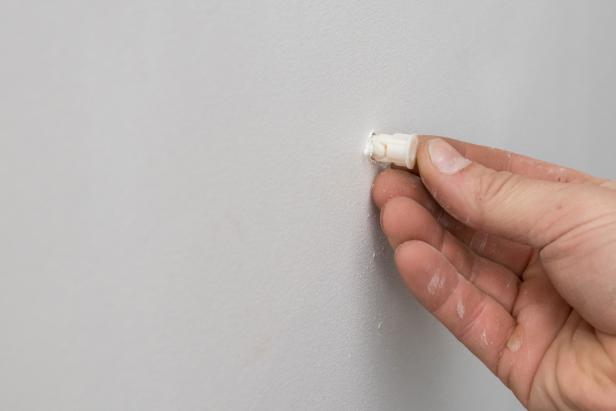
Shutterstock/Shyjo
Drywall Anchor
Drywall Anchor Instructions:
- Follow manufacturer directions to determine whether you need to predrill a hole, or note if the anchor is self-drilling. If pre-drilling, be cautious to choose a drill bit that is the correct width for your anchor. If it is too big, the anchor and screw are more likely to fall out.
- Insert the anchor and, if necessary, use a small block of wood and a hammer to tap the bolt in so that it’s flush with the wall.
- Place the object you’re hanging or any supplemental hanging hardware between the screw and the fastener and then tighten until secure.
- If you need to remove the screw once it’s installed, it’s best to replace the wall anchor, too.
How to Install Molly Bolts
How it works: A molly bolt is a screw encased with metal that expands in a predrilled hole to support medium-weight items.
Best for: high-use and mid-weight range items, like coat hooks, or with lightweight items in the ceiling, such as smoke detectors
Weight limit: 25 to 50 pounds
These little mollies might look similar to traditional drywall anchors, but their construction makes them both more durable and more reliable. They’re easy to install and — as a matter of fact — if you’re looking to upgrade or replace an existing plastic wall anchor, you can easily pop one of these into the existing hole so that it can hold more weight.
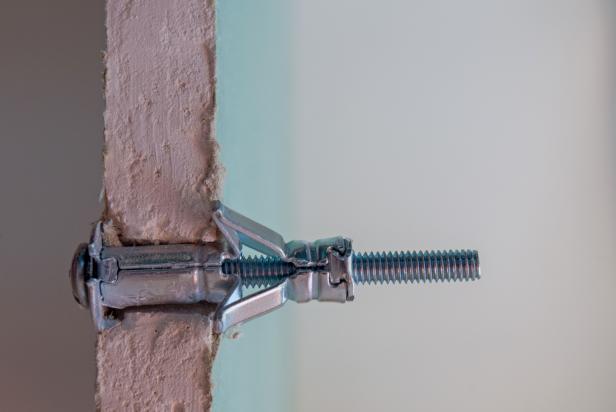
Shutterstock/ Andy Rely
Molly Boot
Molly Bolt Instructions:
- Follow manufacturer directions to predrill a hole to the correct width.
- Identify the bottom of the anchor. Molly anchors are unique in that the underside has sharp tips that help them grip the drywall.
- Insert the Molly bolt into the predrilled hole and use a small block of wood and a hammer to tap the bolt in so that it’s flush with the wall.
- Use a drill or screwdriver to tighten the screw to expand the anchor in the wall.
- Remove the fastener to connect your object to the new anchor.
How to Install Toggle Bolts
Purpose: A toggle bolt has a spring-loaded nut that butterflies open when inserted into the wall. Once tightened, it creates tension to clamp to the back of the drywall.
Best for: heavy-duty installations such as shelves or televisions, or for use with ceiling hooks
Weight limit: 50 to 200 pounds
Toggles offer the most muscle of any traditional drywall anchors and mollies, sold to accommodate the heaviest of items you need to hang. They come in a variety of lengths and thicknesses making it possible to secure both heavy items and into thicker drywall or through other materials, such as lathe and plaster.
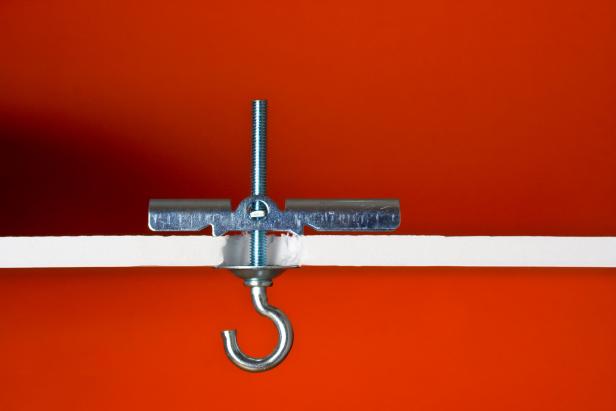
Shutterstock/Hans Geel
Toggle Bolt
Toggle Bolt Instructions:
- Follow manufacturer directions to predrill a hole to the correct width. The hole you drill for any toggle bolt is likely wider than any other drywall anchor, so be sure that the item you’re attaching will fully cover the hole.
- Assemble the bolt in combination with the item you’re hanging
- insert the folded, spring-loaded toggle on the bolt into the predrilled hole and push it through until you feel the toggle open. At this point, you will not be able to pull the toggle back through the drywall.
- Use a drill to tighten the bolt so that it threads deeper through the toggle. It may be necessary to create some tension by pulling the toggle towards the backside of the drywall to prevent it from spinning. Avoid over-tightening the toggle bolt.
Toggle bolts only fail if they are unscrewed. It is rare that they would break inside the wall or pull through the drywall if you’re using hardware suitable for the weight of your item. Once inserted into the drywall through the predrilled hole, you cannot reverse course and retrieve the butterflied nut.
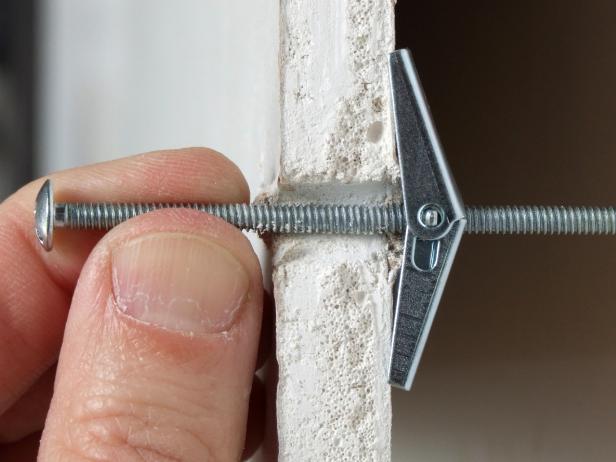
Chris Hill
When multiple toggles are used to secure a single item (such as a wall-mounted TV bracket with upwards of two to four bolts), you can rest assured in knowing that the bracket is solidly in place. It might even be able to support your human weight.
How to Remove Drywall Anchors
Wall anchors can be tricky to get out of a wall. Follow these tips to reduce damage and repair unsightly holes.
The Easiest Way to Hang a Heavy Mirror
Here's everything you need to know about safely and securely hanging heavy, oversized mirrors quickly and easily without a call to the handyman — or potentially damaging your wall with drywall anchors.






